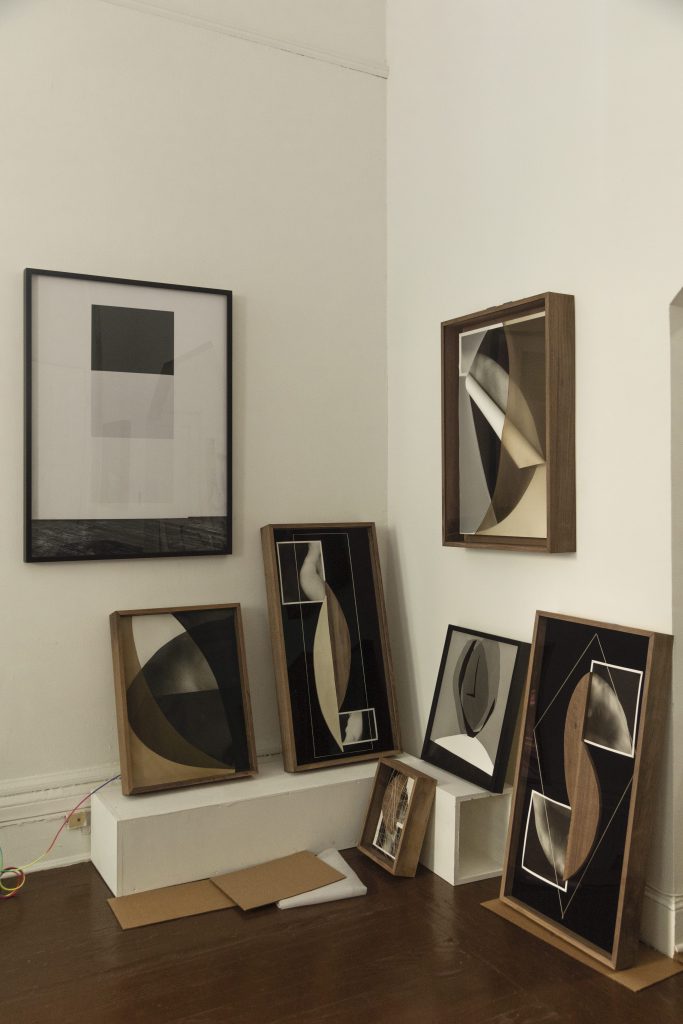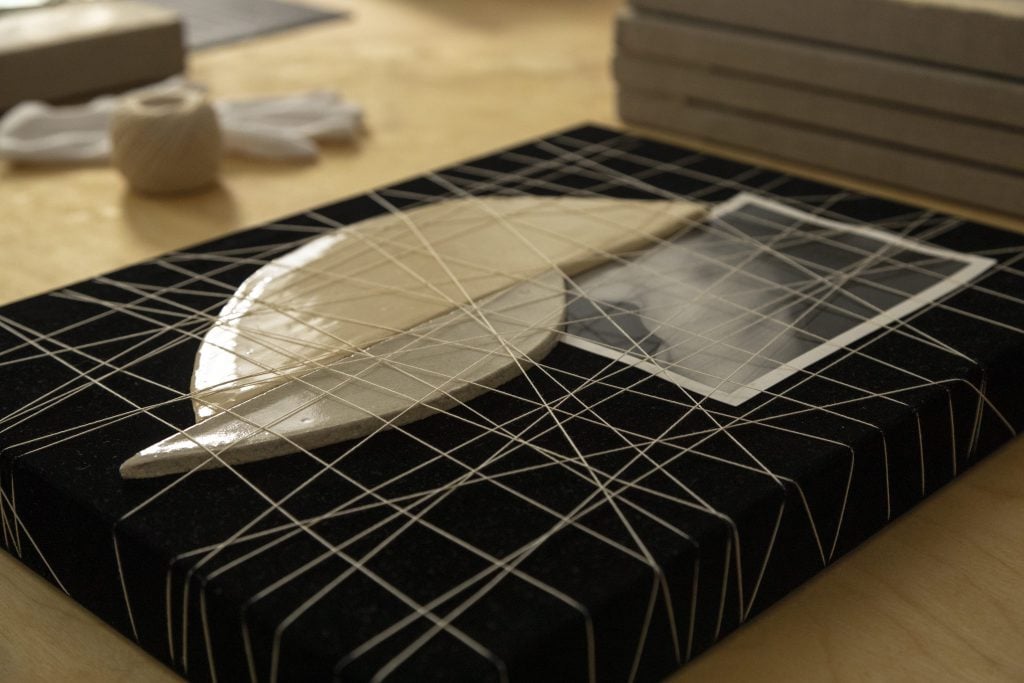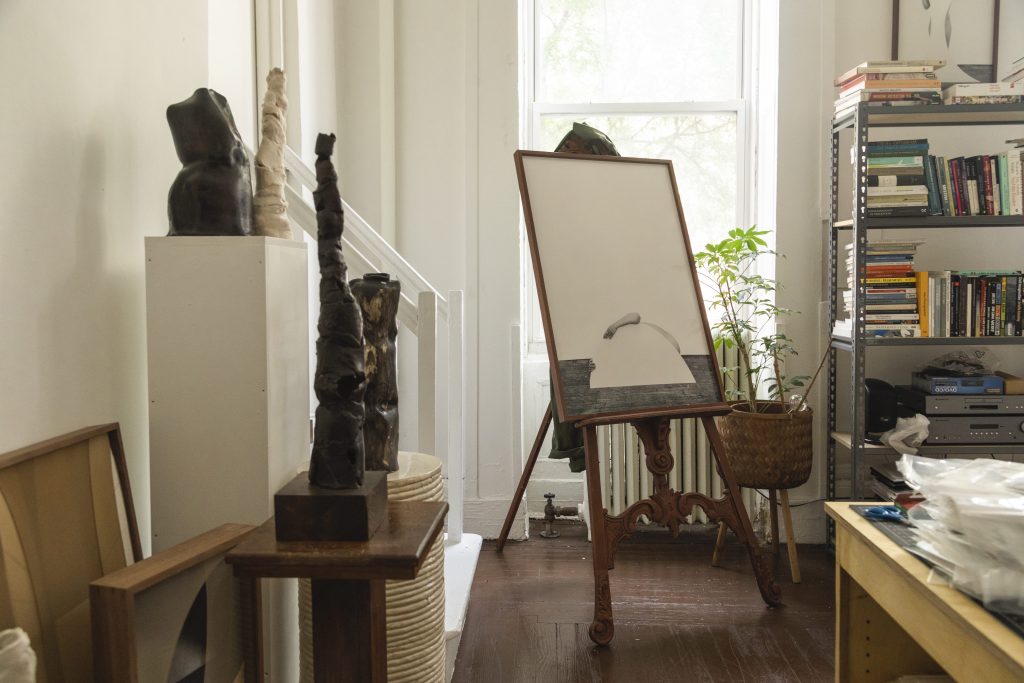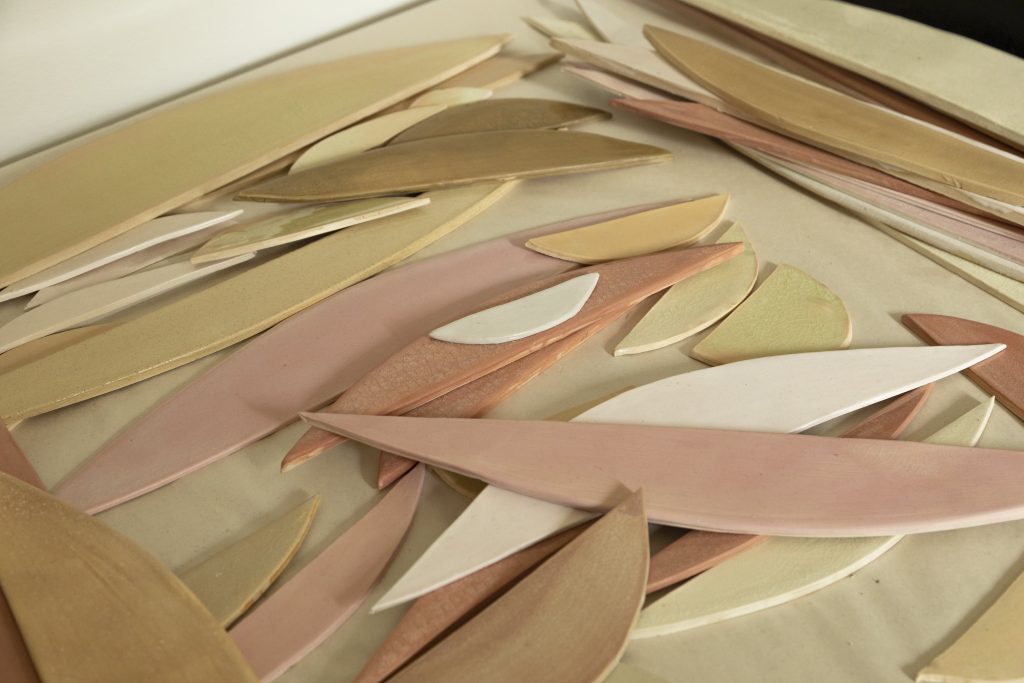With her first presentation at the Venice Biennale this year and a solo show set to open at Rachel Uffner gallery in New York this September, Sheree Hovsepian is having a moment.
Through her photo-based, exquisite corpse–like assemblages, the Iran-born American artist explores the human form in ways at once earthly, celestial, and highly intimate. For them, she layers silver gelatin prints and photograms of fragmented body parts (her sister’s, if not her own) with materials such as ceramic, nylon, and string, the latter resembling rays of starlight.
Institutions such as the Art Institute of Chicago, the Guggenheim, and the Studio Museum in Harlem have collected Hovsepian’s surreal, tactile works. They’re set within walnut frames that she crafts by hand in her East Village, New York studio—a “warm, nest-like” space, as she described it, with high ceilings and good sun, not to mention piles of photos and ceramic pieces.
While visiting Menorca, Spain, where her husband Rashid Johnson has a new exhibition at Hauser & Wirth, Hovsepian took some time to tell us about her life and latest work in the studio.

Photo: Jordan Tiberio.
What is the most indispensable item in your studio and why can’t you live without it?
My tacking iron used to mount photographs.
What is a studio task on your agenda this week that you are most looking forward to?
I’m not in the studio this week because I’m in Menorca. I’m resting and getting some sun, which is incredibly important in any creative practice. When I return, I’ll be focusing on finishing work for my upcoming show, which opens at Rachel Uffner gallery in September.
What kind of atmosphere do you prefer when you work? Do you listen to music or podcasts, or do you prefer silence? Why?
I listen to podcasts or NPR. Last week I streamed the talks and panels from the Venice Biennale, which I really enjoyed. All of the talks are available on their YouTube Channel. I don’t like to listen to music because it interferes with my thinking; I’m a music lover so it takes too much focus from me. It’s an art form, so it can persuade my mood and creep into my psyche. This is a strange thing because, beyond the studio, I’m often the person who brings the music and insists on playing DJ.
Who are your favorite artists, curators, or other thinkers to follow on social media right now?
Benjamin Godsill, Cecilia Alemani, Hank Willis Thomas, Hilton Als, and Ian Alteveer.
Is there a picture you can send of your current work in progress at the studio?

Photo: Jordan Tiberio.
When you feel stuck while preparing for a show, what do you do to get unstuck?
I make myself go to the studio and work on all of the “dumb” or “flawed” ideas I might have. Physically working on and through ideas often spurs new ideas. Just being in the studio and surrounded by my things helps in my decision making. And that’s all art making is—a series of decisions.
What trait do you most admire in a work of art? What trait do you most despise?
I admire transparency. I despise insincerity.
What images or objects do you look at while you work? Share your view from behind the canvas or your desktop—wherever you spend the most time.
I’m surrounded by my work in my studio. I like to have the trajectory of my practice available for visits because there are common themes and ideas that weave in and out of my work and it is good to have examples on hand when talking about this. Being surrounded by my works allows me to find common threads or pick up on conversations within my process. I also love to have my books on hand.

Photo: Jordan Tiberio.
What is the last exhibition you saw that made an impression on you and why?
Rashid Johnson at Hauser & Wirth Menorca. He’s so nimble in his practice and shifts his work in such a way that shows the permeability in his thinking and how he responds to the magical setting of the gallery.
What made you choose this particular studio over others?
I moved my studio to the city from Brooklyn during the pandemic. I live in the city and I like being able to walk to my studio—it allows me more flexibility in the day. It’s in the East Village, which is such a vibrant neighborhood with great food. When I saw this particular space I knew it was perfect. It has really high ceilings and I love its architectural details.
Describe the space in three adjectives.
Warm, nest-like, complete.

Photo: Jordan Tiberio.
How does the studio environment influence the way you work?
I usually like to work alone in the studio. My studio can be a bit messy, but there’s an order and a system to the mess. I work with collage in what I call an additive process; photos are stacked and ceramics pieces are clustered according to color so I can see and play with all of the components.










